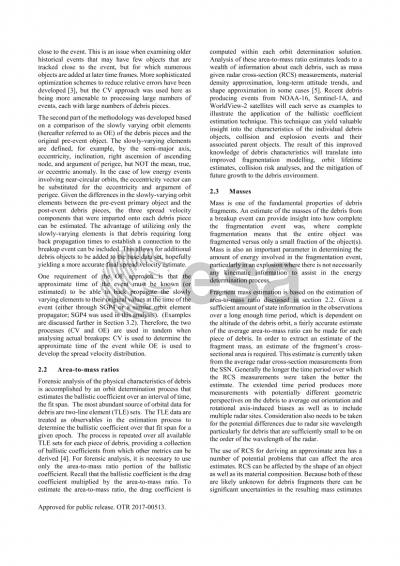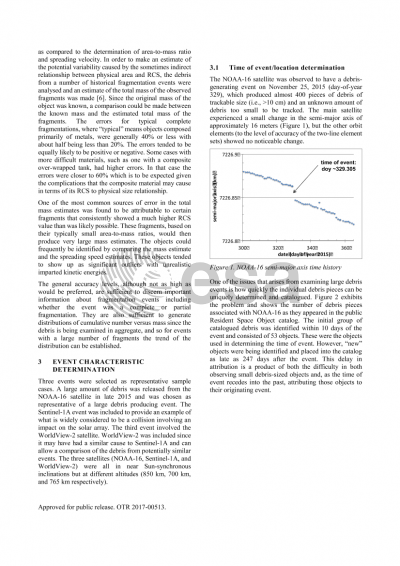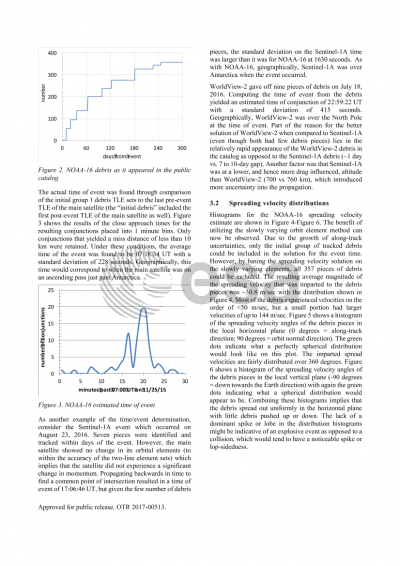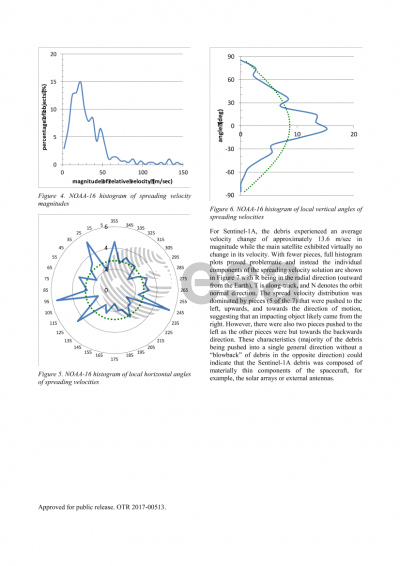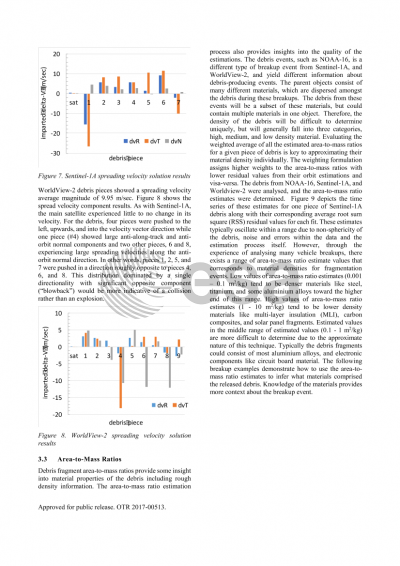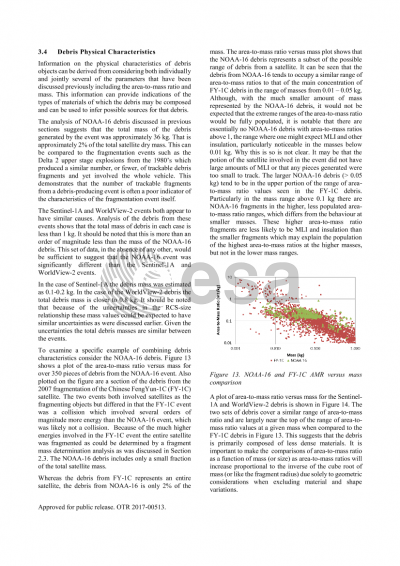Document details

Abstract
On-orbit fragmentation events, both collisions and explosions, continue to occur in spite of efforts to reduce their frequency through application of debris mitigation measures. Frequently the cause of these debris-producing events is not immediately known and there may be very little data available with which to determine a cause. Over the last several years The Aerospace Corporation has developed several techniques to characterize debris objects from dozens of historical fragmentation events. It has also improved its fragmentation modeling capabilities. Through these improvements it has become possible to estimate both the characteristics of the individual fragments from a debris producing event on orbit as well as the characteristics of the fragmentation event itself.
This paper will examine the approaches that have been developed to characterize the fragments and the debris-producing events. Estimates of the velocity imparted by the debris generation event (spreading velocity), fragment area-to-mass ratios and approximate mass can be made to characterize individual fragments. The results from these individual analyses can be aggregated to produce spreading speed, area-to-mass ratio, and mass distributions which can reveal key characteristics of the debris generating event, such as event time and location, through modeling and comparison with data from historical events. Estimates of the energy involved in the debris generating event can be made based on spreading speed and fragment masses. Aggregating all of this information can provide insights into possible causes of the breakup event.
Several recent debris generating events will be examined to illustrate the results that can be produced by this type of analysis. The events will include both probable self-induced events and collisions. Limits on the analysis approaches will be discussed as well as current and future development efforts.
Preview

